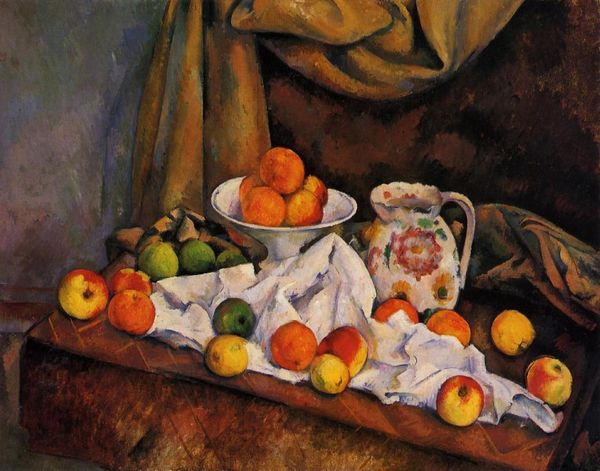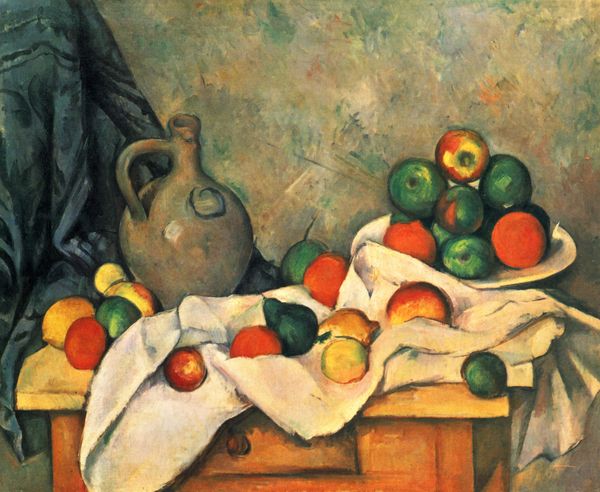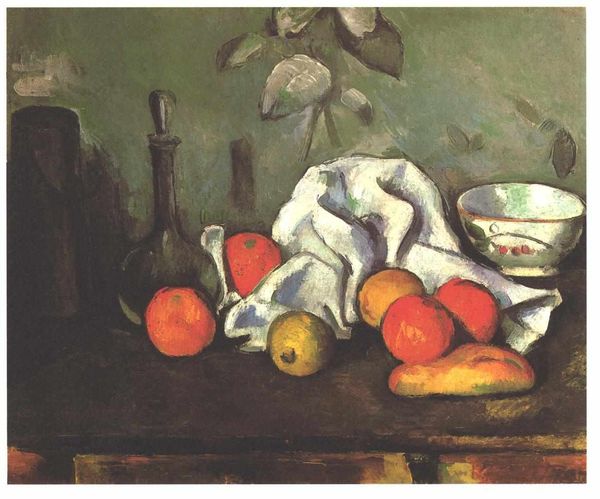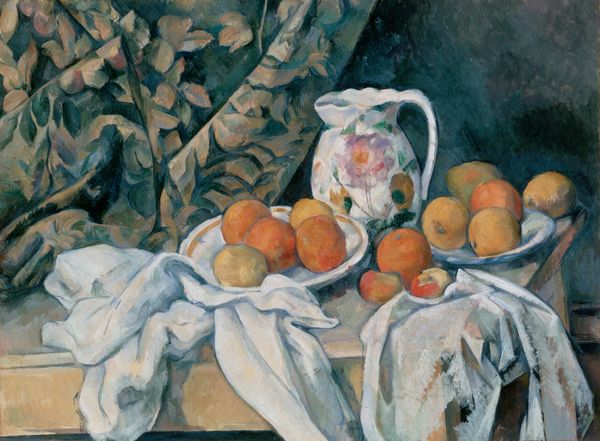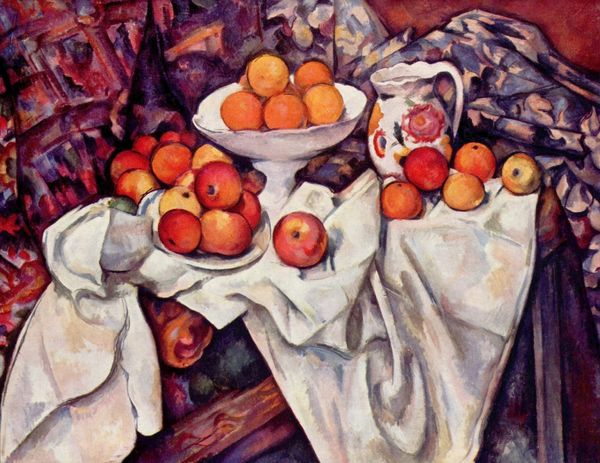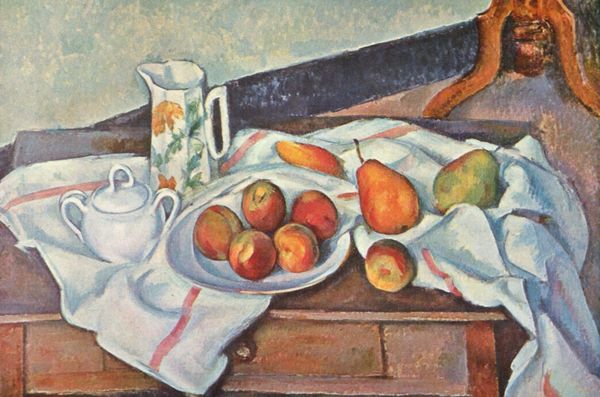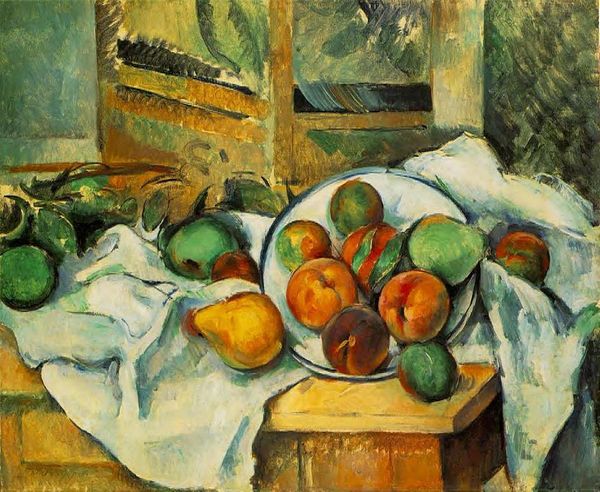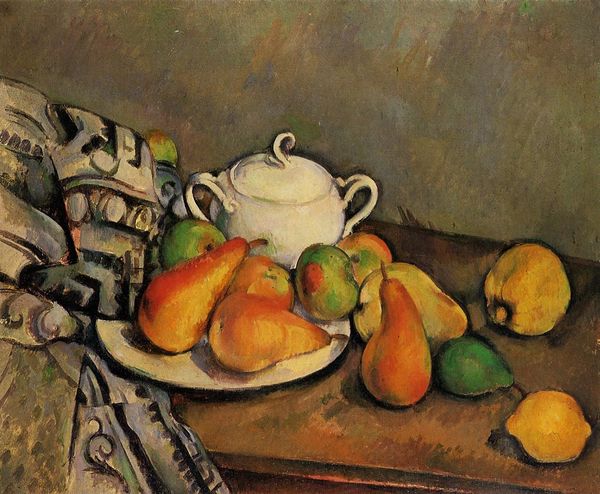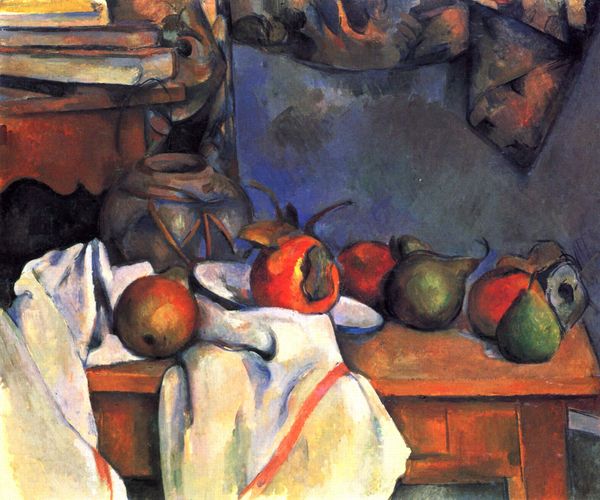
painting, oil-paint
#
painting
#
oil-paint
#
oil painting
#
post-impressionism
Dimensions: 81.2 x 106 cm
Copyright: Public domain
Paul Cézanne made this still life with oil on canvas. The deceptively simple arrangement of objects invites us to consider their relationship to one another, but also to the artist and his society. Painted in France, Cézanne's work challenged the art establishment of his time. He questioned the conventional techniques taught in art academies, which promoted realistic and idealized representations. Instead, Cézanne experimented with form, color, and perspective, to create his own visual language. Notice how the objects are flattened and simplified, and the perspective is distorted, this was a clear departure from the traditional approach to still life. Cézanne’s art opened the way for modern movements like Cubism. If you want to understand the significance of Cézanne's departure from traditional art, look into the history of art institutions and exhibitions in France during the late 19th century. Also consider the rise of a middle class that wanted new modes of expression that broke from the past. All this historical context gives new meaning to this painting.
Comments
No comments
Be the first to comment and join the conversation on the ultimate creative platform.
